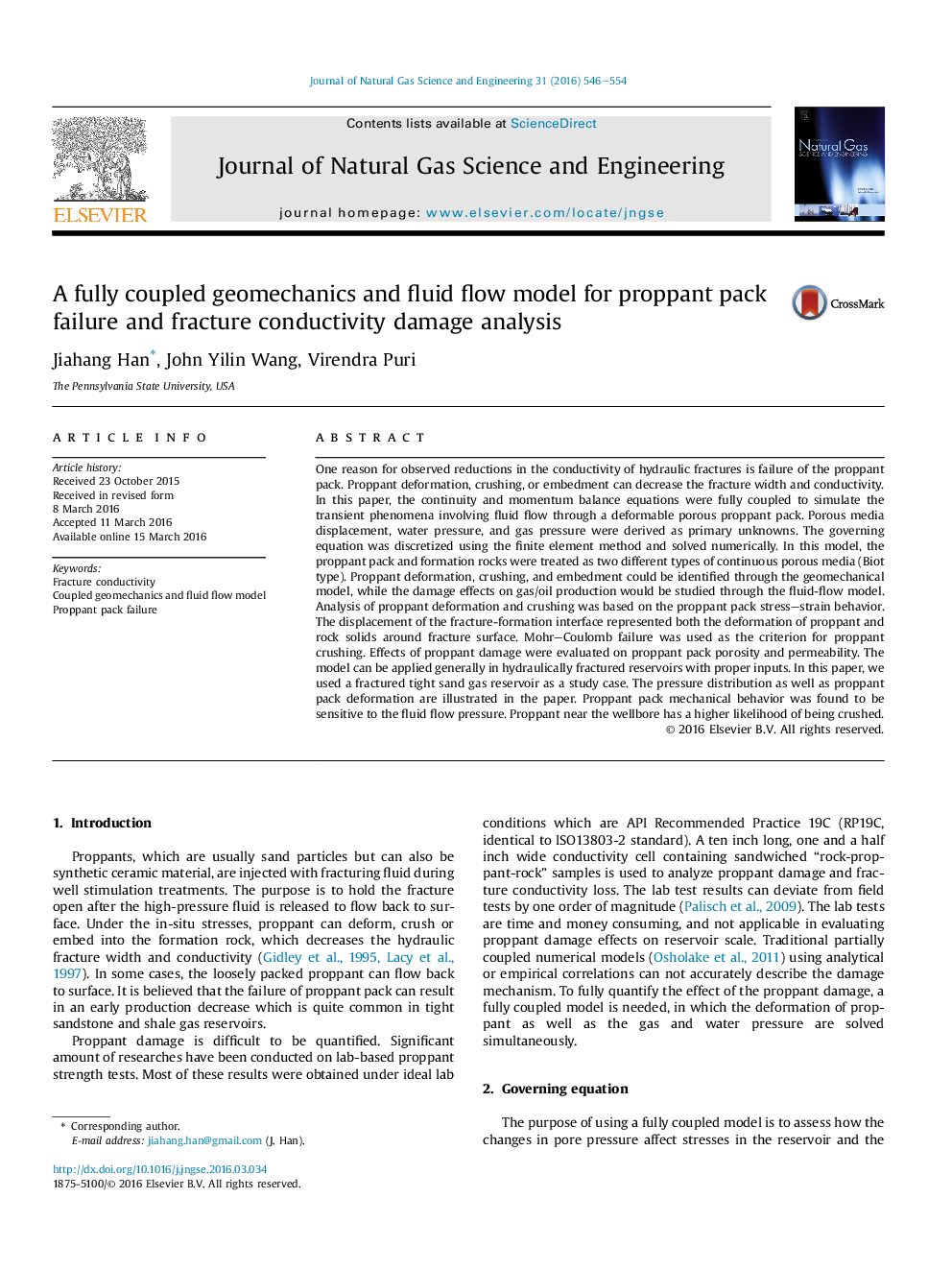| Article ID | Journal | Published Year | Pages | File Type |
|---|---|---|---|---|
| 8128999 | Journal of Natural Gas Science and Engineering | 2016 | 9 Pages |
Abstract
One reason for observed reductions in the conductivity of hydraulic fractures is failure of the proppant pack. Proppant deformation, crushing, or embedment can decrease the fracture width and conductivity. In this paper, the continuity and momentum balance equations were fully coupled to simulate the transient phenomena involving fluid flow through a deformable porous proppant pack. Porous media displacement, water pressure, and gas pressure were derived as primary unknowns. The governing equation was discretized using the finite element method and solved numerically. In this model, the proppant pack and formation rocks were treated as two different types of continuous porous media (Biot type). Proppant deformation, crushing, and embedment could be identified through the geomechanical model, while the damage effects on gas/oil production would be studied through the fluid-flow model. Analysis of proppant deformation and crushing was based on the proppant pack stress-strain behavior. The displacement of the fracture-formation interface represented both the deformation of proppant and rock solids around fracture surface. Mohr-Coulomb failure was used as the criterion for proppant crushing. Effects of proppant damage were evaluated on proppant pack porosity and permeability. The model can be applied generally in hydraulically fractured reservoirs with proper inputs. In this paper, we used a fractured tight sand gas reservoir as a study case. The pressure distribution as well as proppant pack deformation are illustrated in the paper. Proppant pack mechanical behavior was found to be sensitive to the fluid flow pressure. Proppant near the wellbore has a higher likelihood of being crushed.
Keywords
Related Topics
Physical Sciences and Engineering
Earth and Planetary Sciences
Earth and Planetary Sciences (General)
Authors
Jiahang Han, John Yilin Wang, Virendra Puri,
